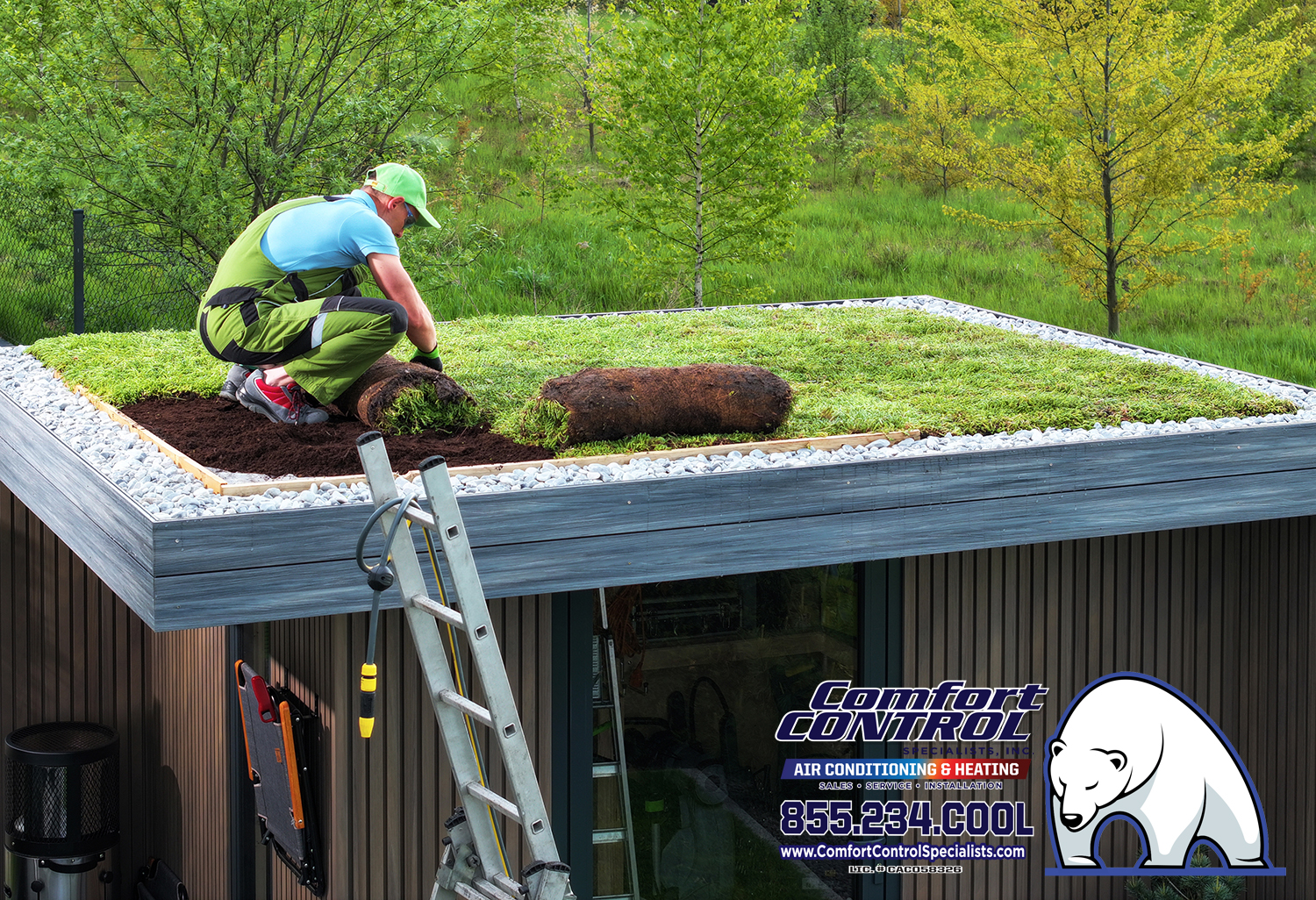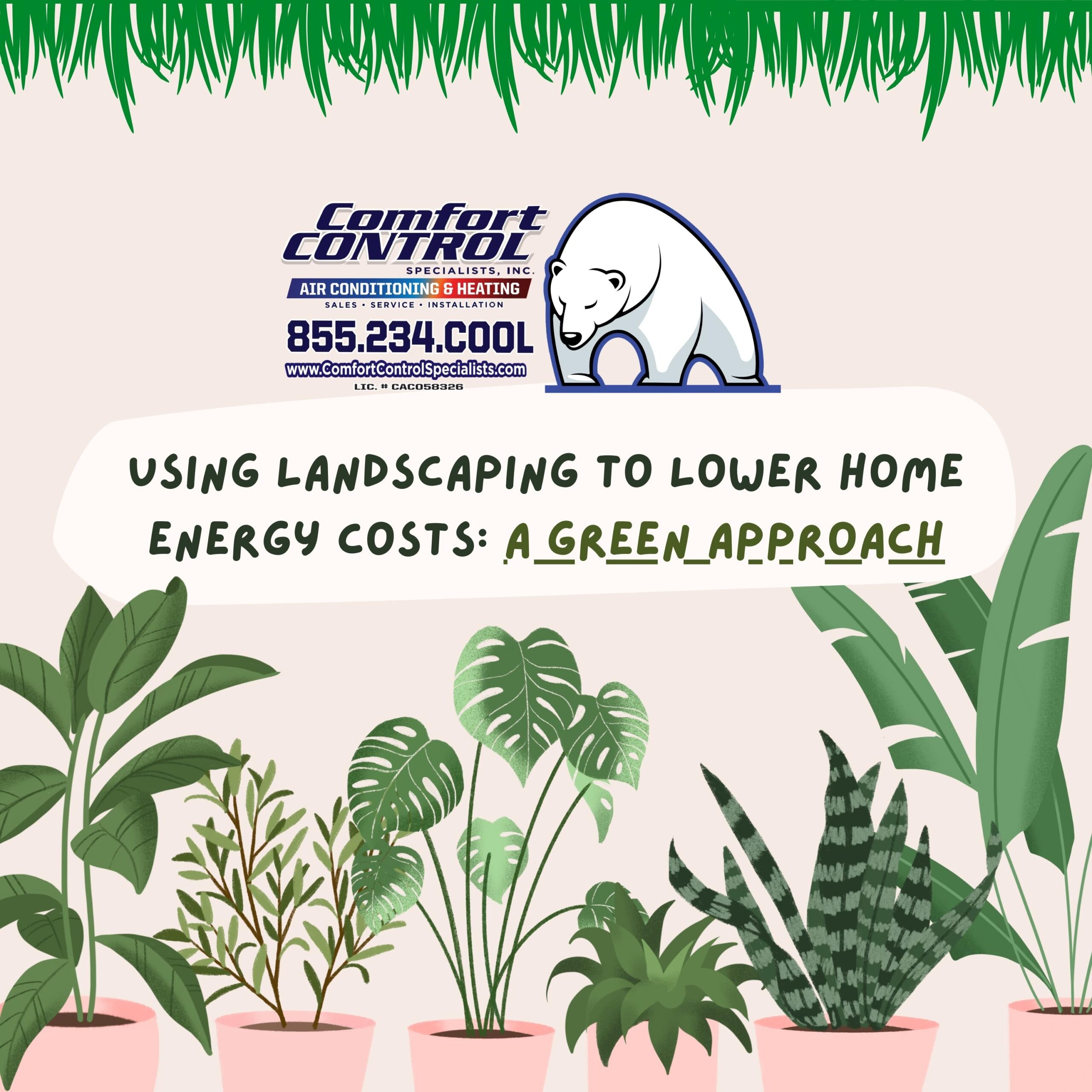[vc_row][vc_column][vc_column_text]As conversations about sustainability and energy conservation grow, homeowners are increasingly looking for practical ways to decrease energy usage and utility costs. One of the most effective yet often overlooked methods is through intelligent landscaping. Landscaping that considers shade, windbreaks, and the local climate can significantly reduce a home’s energy needs. This article explores how residents in warm climates like Florida can utilize landscaping to lower home energy costs and mitigate heat.
The Science of Heat Mitigation Through Landscaping
Before we delve into the practical methods of energy-efficient landscaping, let’s first understand the science behind heat mitigation through landscaping.
Plant Photosynthesis and Transpiration
Trees, shrubs, and grasses provide natural cooling through the processes of photosynthesis and transpiration. Photosynthesis, the process through which plants convert sunlight into energy, absorbs solar radiation, mitigating heat impact.
Transpiration, on the other hand, is the process through which water is moved from the roots of a plant to its leaves, where it evaporates into the atmosphere. This process cools the air around the plant, functioning much like an evaporative cooler1.
Shading and Albedo
Shading from trees can block direct sunlight, reducing the amount of heat absorbed by your home. By blocking sunlight from hitting your windows and walls, you can prevent solar heat gain, reducing the need for air conditioning.
In addition to providing shade, trees and other plants affect the albedo – the measure of the reflectivity of a surface. Light-colored surfaces (like many plants) have a higher albedo and reflect more sunlight, reducing the amount of heat absorbed by your landscape and home2.
Smart Landscaping for Energy Efficiency
With the basic science in mind, let’s explore the practical ways homeowners can utilize landscaping for energy efficiency.
Plant Trees Strategically for Shading
Trees are the most effective natural shade providers. Deciduous trees, which shed their leaves during the winter, are perfect for providing shade in the summer and letting in light during the winter.
In Florida, some suitable deciduous trees include Red Maple (Acer rubrum), Bald Cypress (Taxodium distichum), and Southern Magnolia (Magnolia grandiflora). Plant these trees on the east and west sides of your home to block the morning and afternoon sun3.
Use Vines, Shrubs, and Groundcover Plants
Vines, shrubs, and groundcover plants can protect your home from heat by shading the ground and pavement around your home, reducing reflected heat. They also cool the air around them through transpiration.
Vines such as Coral Honeysuckle (Lonicera sempervirens) can be used to shade walls and windows. Shrubs like Florida Privet (Forestiera segregata) can be used as foundation plantings to shade the ground around your home. Groundcover plants such as Beach Sunflower (Helianthus debilis) and Perennial Peanut (Arachis glabrata) can reduce the temperature of the ground surface and cool the surrounding air4.
Create Windbreaks with Trees and Shrubs
A windbreak is a group of trees and shrubs designed to block or redirect the wind. In Florida, windbreaks can help direct breezes toward your home, providing natural cooling.
Suitable trees for windbreaks in Florida include Southern Red Cedar (Juniperus silicicola) and Live Oak (Quercus virginiana). Shrubs such as Wax Myrtle (Myrica cerifera) and Sea Grape (Coccoloba uvifera) can also be effective5.
Install Green Roofs or Walls**
Green roofs or walls are surfaces covered with vegetation. They can significantly reduce the heat absorption of a building’s roof or walls, leading to lower indoor temperatures and reduced need for air conditioning.
There are two main types of green roofs: intensive and extensive. Intensive green roofs are essentially elevated parks, with deep soil that can support a variety of plant life. Extensive green roofs have a shallower growing medium, typically supporting sedums, grasses, mosses, and similar plants.
In Florida, green roofs can include plants like Sedum (Sedum spp.), Perennial Peanut (Arachis glabrata), and Wildflower mixtures. Green walls can be covered with vines like Coral Honeysuckle (Lonicera sempervirens) or creeping fig (Ficus pumila)1.

Use Reflective Mulches in Garden Beds
Reflective mulches can be used to increase the albedo of your garden beds, reducing the amount of solar radiation absorbed by the soil and therefore reducing the amount of heat radiated back into the air. This can help cool the surrounding air and reduce the temperature of nearby outdoor living spaces. Reflective mulches include plastic films (such as silver or white polyethylene) and organic mulches that are light in color, such as straw or grass clippings2.
A Healthy Relationship: Your Garden and Home
As seen, there are various ways to create an energy-efficient landscape in Florida’s hot climate. By considering your home’s orientation, local wind patterns, and the sun’s path, you can strategically plant trees, vines, and shrubs to provide shade, direct cooling breezes, and reduce reflected heat. In addition, green roofs or walls and reflective mulches can further decrease heat absorption.
In doing so, not only will you have a beautiful, lush garden, but you will also reduce your home’s energy costs. Moreover, the benefits of such a landscape extend beyond your utility bill—contributing to a cooler neighborhood, a healthier environment, and a more sustainable future.
_________
Footnotes
Getter, K., Rowe, B. (2006). “The Role of Extensive Green Roofs in Sustainable Development”. HortScience.
Basillais, E. (2017). “Effect of Reflective Mulch on Tomato Yield and Quality”. HortTechnology.
If you live in Odessa, Keystone, Spring Hill, Tarpon Springs, Land O Lakes, Oldsmar, Brooksville, or the surrounding areas, please don’t hesitate to contact the Comfort Control Specialists for a comprehensive AC inspection and tune-up or AC repair.[/vc_column_text][/vc_column][/vc_row]



